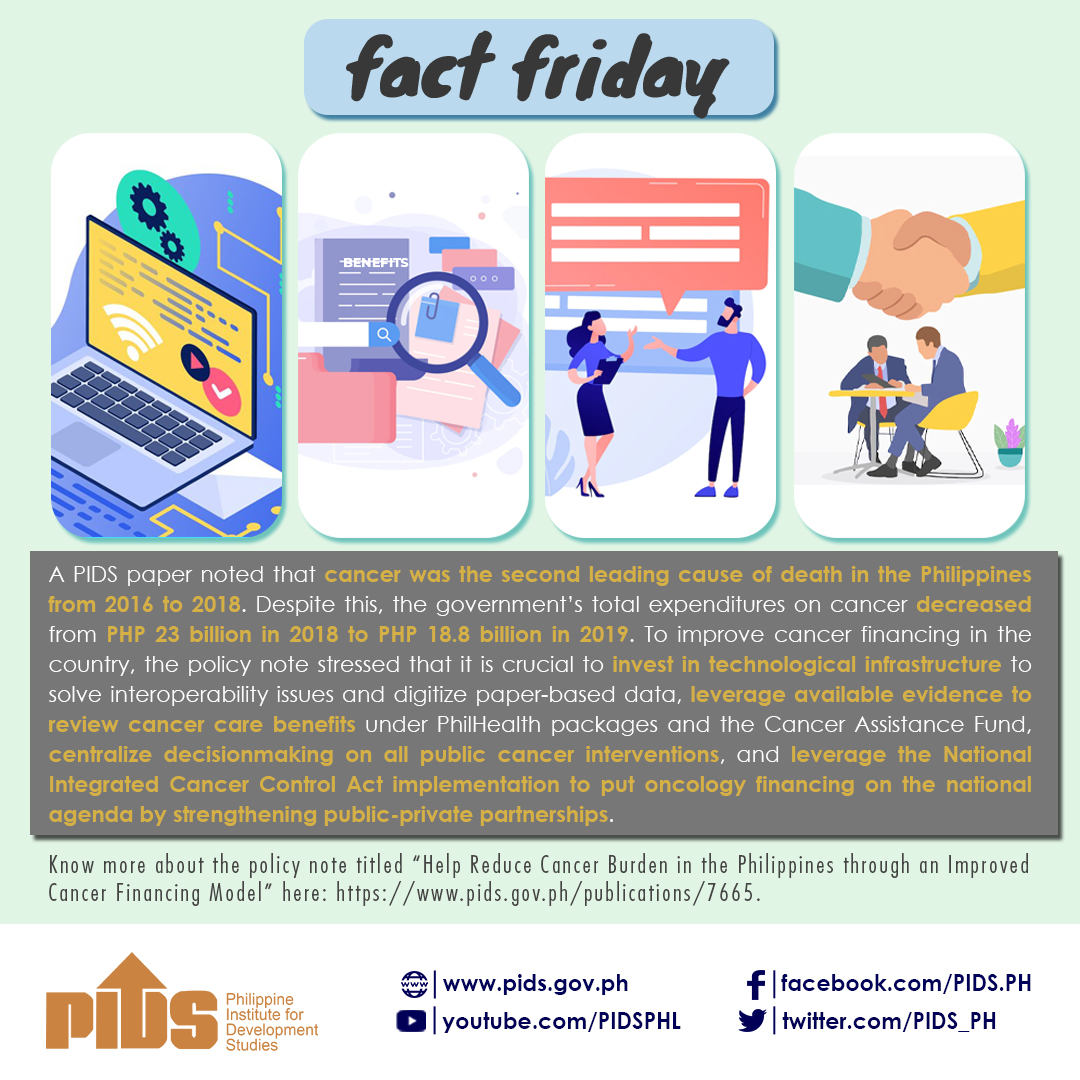Health advocates said a huge portion of the country’s cancer burden is preventable, but due to the “inadequate and inaccessible” cancer screenings, the disease remains to be one of the major causes of mortality in the Philippines.
Philippine Institute for Development Studies Senior Research Fellow Val Ulep, in a study called “The Economic Burden of Cancer,” said breast and cervical cancer screenings in the Philippines are “extremely low” compared to countries with advanced health systems.
“In countries like Malaysia, the prevalence of self-breast examinations among women is almost 50 percent. Mammogram use is 20 percent, while PAP smear is about 40 percent. High income countries even have higher rates than Malaysia,” said Ulep.
Through screening, cancer may be detected and cured at an early stage.
How can it be resolved?
While the problem may seem huge, health experts reiterated that the national government may start with one but major factor: allocate bigger funding for the country’s anti-cancer program.
To provide context, the Philippine government has allocated P1.56 billion for Filipino cancer patients pursuant to Republic Act No. 11215, otherwise known as the National Integrated Cancer Control Act.
Along with other health advocates, Philippine General Hospital (PGH) Cancer Institute Chairman Dr. Jorge Ignacio said the P1-billion-worth cancer budget is "extremely insufficient" to address the needs of Filipino breast and cervical cancer patients, let alone all types of cancer.
“I don’t know if there was a feasibility study done on the preventive side. Kulang na kulang po ang P1 billion. Preventive pa lang tayo, mahirap i-imagine na matutugunan natin lahat [ng pangangailangan] (P1 billion is not enough. This is just the preventive side, it is hard to imagine that we will be able to meet all needs),” said Ignacio in a round table discussion with the media in March.
This was backed by Cancer Coalition by stressing that the P1 billion budget can only help around 200 cancer patients throughout the 18 cycles of required treatment, may it be targeted or chemotherapy.
Chemotherapy costs about P5,000 per cycle according to Ignacio. Meanwhile, targeted therapy, which is conducted every three weeks, costs around P30,000 per session.
In 2022, the Philippine Statistics Authority (PSA) disclosed that cancer ranked 3rd among the leading causes of mortality across the archipelago. Data from the World Health Organization (WHO), on the other hand, showed that 27,163 breast cancer cases were recorded in the Philippines in 2020 alone.







